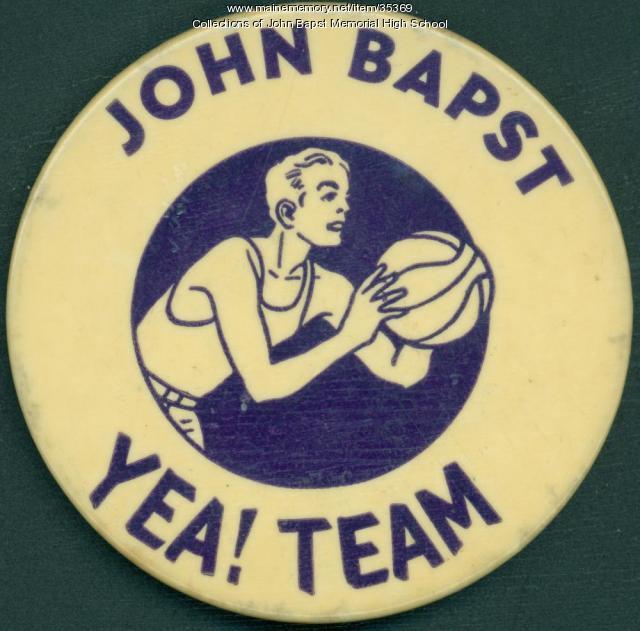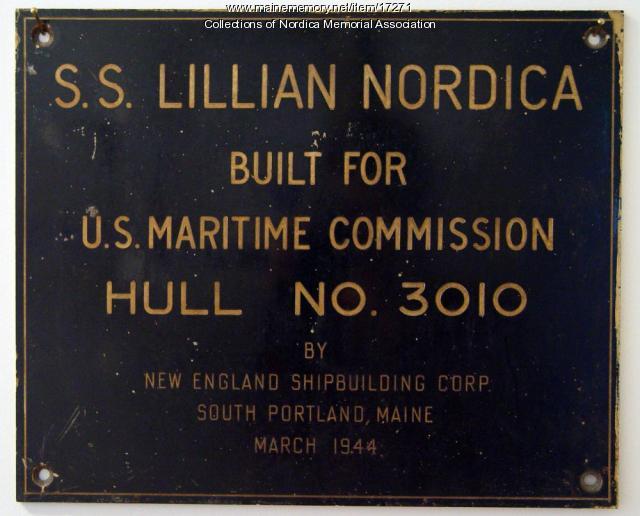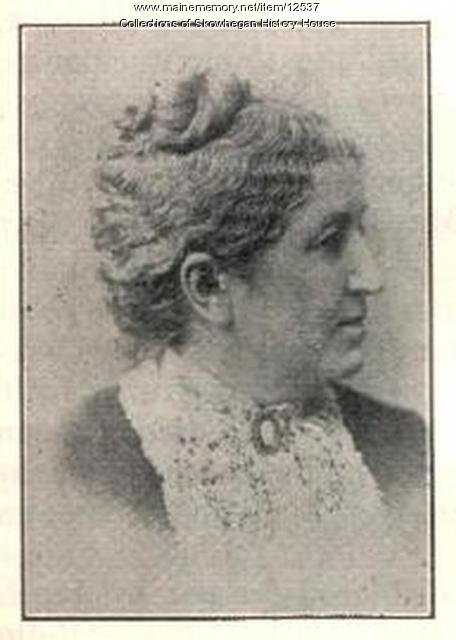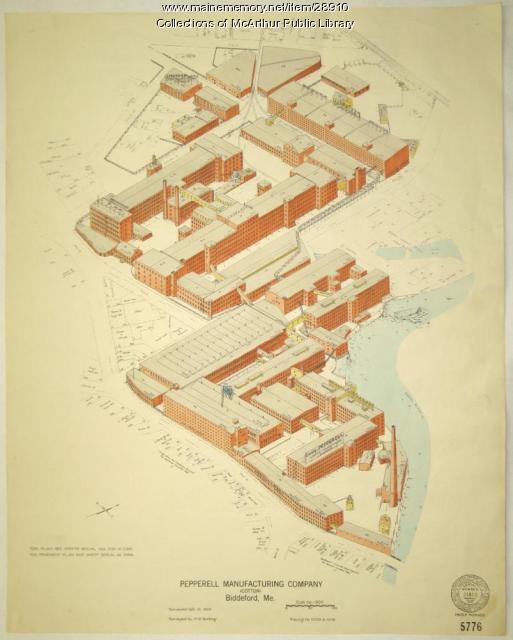Keywords: Finishing
- Historical Items (207)
- Tax Records (4)
- Architecture & Landscape (2)
- Online Exhibits (39)
- Site Pages (64)
- My Maine Stories (15)
- Lesson Plans (0)
Online Exhibits
Your results include these online exhibits. You also can view all of the site's exhibits, view a timeline of selected events in Maine History, and learn how to create your own exhibit. See featured exhibits or create your own exhibit
Exhibit
John Bapst High School was dedicated in September 1928 to meet the expanding needs of Roman Catholic education in the Bangor area. The co-educational school operated until 1980, when the diocese closed it due to decreasing enrollment. Since then, it has been a private school known as John Bapst Memorial High School.
Exhibit
South Portland's Wartime Shipbuilding
Two shipyards in South Portland, built quickly in 1941 to construct cargo ships for the British and Americans, produced nearly 270 ships in two and a half years. Many of those vessels bore the names of notable Mainers.
Exhibit
Student Exhibit: Bloomfield Academy
In 1842, the new Bloomfield Academy was constructed in Skowhegan. The new brick building replaced the very first Bloomfield Academy, a small wooden building that had been built in 1814 and served as the high school until 1871. After that, it housed elementary school classes until 1980.
Exhibit
Student Exhibit: Rebecca Sophie Clarke
Sophie May, whose real name was Rebecca Clarke, was the author of over 40 books between 1861 and 1903. She wrote the "Little Prudy Series" based on the little town of Norridgewock.
Exhibit
Home: The Wadsworth-Longfellow House and Portland - Streetscape, 1790-1930
"… windows, stone ornamentation, and a slate finish. The first floor was taller than the upper three floors and included storefronts."
Exhibit
History in Motion: The Era of the Electric Railways
Street railways, whether horse-drawn or electric, required the building of trestles and tracks. The new form of transportation aided industry, workers, vacationers, and other travelers.
Exhibit
Student Exhibit: Medicine in Times Past
Inspired by Dr. Greenleaf Wilbur's medical box at the Skowhegan History House, this exhibit highlights some Mainers in the medical field of the past and the stories they had.
Exhibit
This collection of images portrays many buildings in Sanford and Springvale. The images were taken around the turn of the twentieth century.
Exhibit
The West Baldwin Methodist Church, founded in 1826, was one of three original churches in Baldwin. While its location has remained the same, the church has undergone numerous changes to serve the changing community.
Exhibit
Biddeford, Saco and the Textile Industry
The largest textile factory in the country reached seven stories up on the banks of the Saco River in 1825, ushering in more than a century of making cloth in Biddeford and Saco. Along with the industry came larger populations and commercial, retail, social, and cultural growth.
Exhibit
Silk Manufacturing in Westbrook
Cultivation of silkworms and manufacture of silk thread was touted as a new agricultural boon for Maine in the early 19th century. However, only small-scale silk production followed. In 1874, the Haskell Silk Co. of Westbrook changed that, importing raw silk, and producing silk machine twist threat, then fabrics, until its demise in 1930.
Exhibit
The novelty of organized auto racing came to Maine in 1911 with a hill-climbing event in Poland and speed racing at Old Orchard Beach. Drivers and cars came from all over New England for these events.
Exhibit
Settlers' clothing had to be durable and practical to hold up against hard work and winters. From the 1700s to the mid 1800s, the women of Maine learned to sew by making samplers.
Exhibit
Elise Fellows White: World Traveling Violin Prodigy
Elise Fellows White was a violinist from Skowhegan who traveled all over the world to share her music.
Exhibit
George Popham and a group of fellow Englishmen arrived at the mouth of the Kennebec River, hoping to trade with Native Americans, find gold and other valuable minerals, and discover a Northwest passage. In 18 months, the fledgling colony was gone.
Exhibit
Young men and women in the 19th century often went away from home -- sometimes for a few months, sometimes for longer periods -- to attend academies, seminaries, or schools run by individuals. While there, they wrote letters home, reporting on boarding arrangements and coursework undertaken, and inquired about the family at home.
Exhibit
A Brief History of Colby College
Colby originated in 1813 as Maine Literary and Theological Institution and is now a small private liberal arts college of about 1,800 students. A timeline of the history and development of Colby College from 1813 until the present.
Exhibit
Hermann Kotzschmar: Portland's Musical Genius
During the second half of the 19th century, "Hermann Kotzschmar" was a familiar household name in Portland. He spent 59 years in his adopted city as a teacher, choral conductor, concert artist, and church organist.
Exhibit
Women at the turn of the 20th century were increasingly involved in paid work outside the home. For wage-earning women in the Old Port section of Portland, the jobs ranged from canning fish and vegetables to setting type. A study done in 1907 found many women did not earn living wages.
Exhibit
Doing Good: Medical Stories of Maine
Throughout Maine’s history, individuals have worked to improve and expand medical care, not only for the health of those living in Maine, but for many around the world who need care and help.
Exhibit
Home Ties: Sebago During the Civil War
Letters to and from Sebago soldiers who served in the Civil War show concern on both sides about farms and other issues at home as well as concern from the home front about soldiers' well-being.
Exhibit
In Time and Eternity: Shakers in the Industrial Age
"In Time and Eternity: Maine Shakers in the Industrial Age 1872-1918" is a series of images that depict in detail the Shakers in Maine during a little explored time period of expansion and change.
Exhibit
A fire and two men whose lives were entwined for more than 50 years resulted in what is now considered to be "the Jewel of Portland" -- the Austin organ that was given to the city of Portland in 1912.
Exhibit
Shaarey Tphiloh, Portland's Orthodox Synagogue
Shaarey Tphiloh was founded in 1904 by immigrants from Eastern Europe. While accommodating to American society, the Orthodox synagogue also has retained many of its traditions.
























